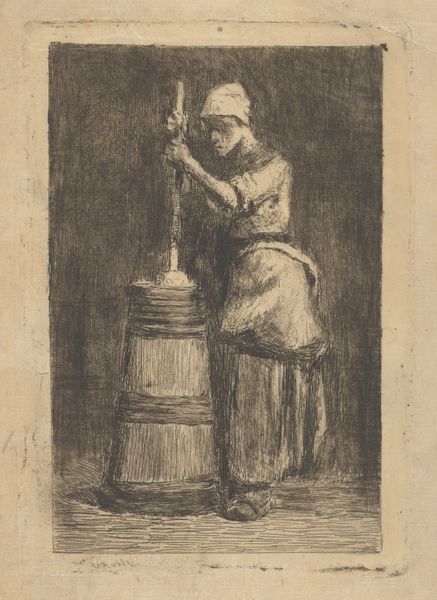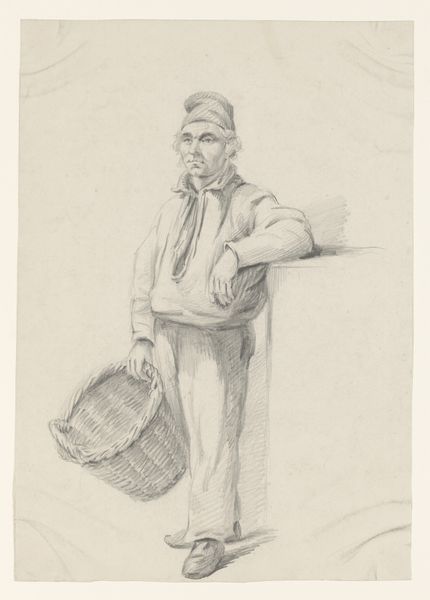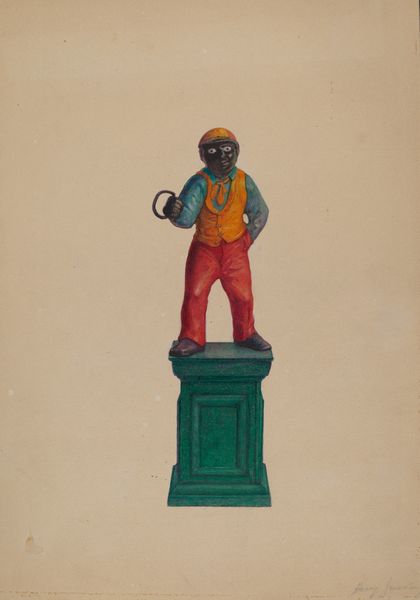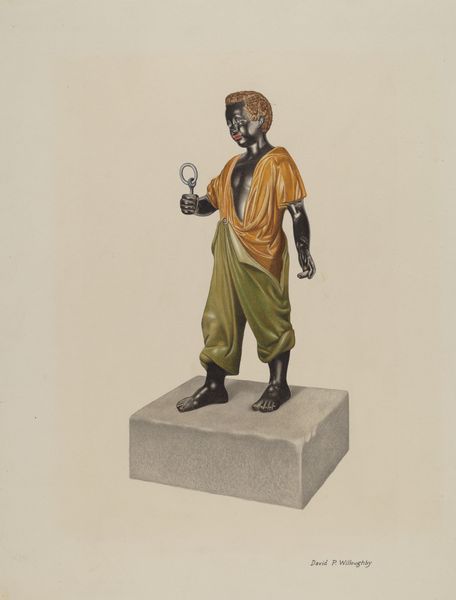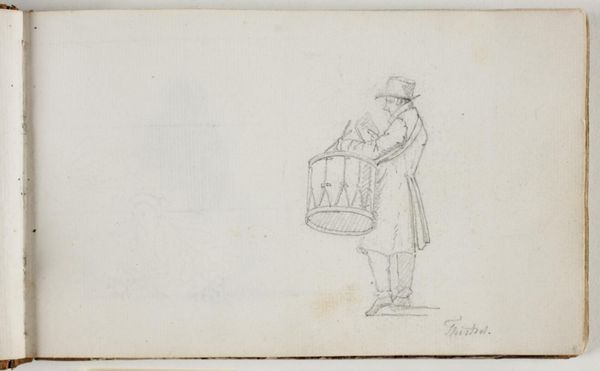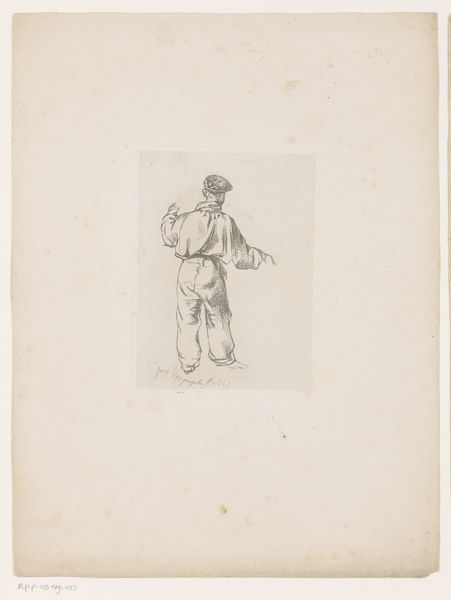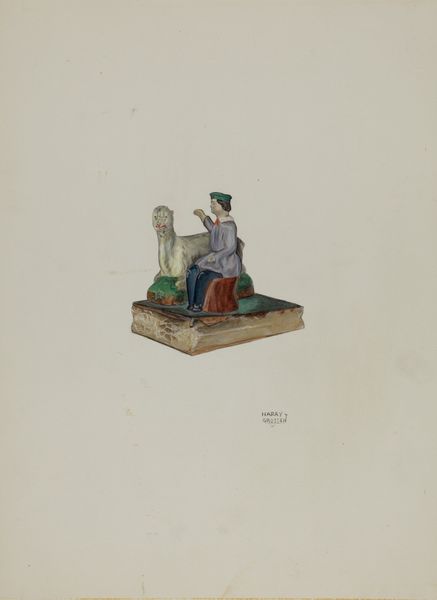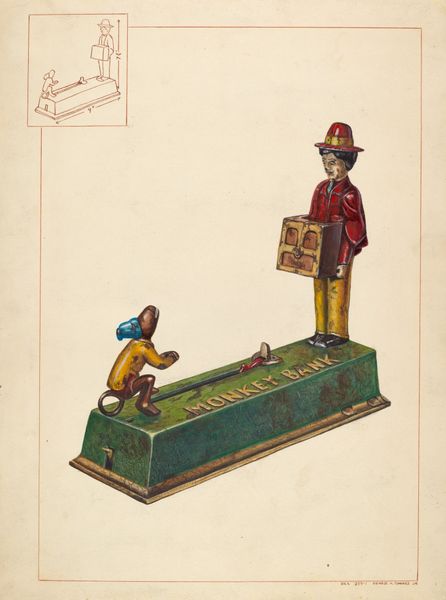
drawing, pencil, graphite
#
portrait
#
drawing
#
figuration
#
pencil drawing
#
pencil
#
graphite
#
genre-painting
#
academic-art
#
graphite
#
watercolor
Dimensions: overall: 40.7 x 30.8 cm (16 x 12 1/8 in.)
Copyright: National Gallery of Art: CC0 1.0
Editor: This is Ray Price's "Drug Store Figure," made around 1937 using pencil and graphite. I'm really struck by the almost mechanical posture and the muted palette, and especially curious why Price chose this particular subject matter. What's your perspective on this work? Curator: Well, looking at the piece through a materialist lens, I’m immediately drawn to the social and economic implications of its subject: a figurine, likely mass-produced for advertising purposes. Notice the stark contrast between the labor implied – the repetitive action of grinding – and its transformation into a commodity. Consider how the figure’s race intersects with that history of labor. Do you see a commentary on the commercialization of identity here? Editor: I hadn’t thought about it that way, but it makes sense. The figure becomes a product representing a product, which seems...exploitative? How does Price's artistic choice, say using graphite, play into that reading? Curator: The use of graphite and watercolor – common, easily accessible materials – underscores the work's connection to everyday life and labor. This wasn’t painted with costly oils in a studio. Instead, think of this drawing as a record of observation and also consider what drawing this way afforded Price. He is making visible the process of transforming labor and human form into just another retail item, open to sale and consumption. Does that shed any light on its creation? Editor: It does. The work almost seems like a critique, using simple means to expose complex relationships of race and labor in commodity culture. Curator: Exactly. And it makes you wonder about the original context of those drugstore figures, the labor required to produce and sell them, and who exactly profited from it. It moves the aesthetic question of “good art” into examining power structures embedded in its creation and subject. Editor: I never thought about this much when looking at an "everyday drawing," and I find the focus on how something is made so crucial to fully understanding it. Curator: Absolutely, thinking materially encourages us to question the art object as well as its role in wider systems of exchange.
Comments
No comments
Be the first to comment and join the conversation on the ultimate creative platform.
